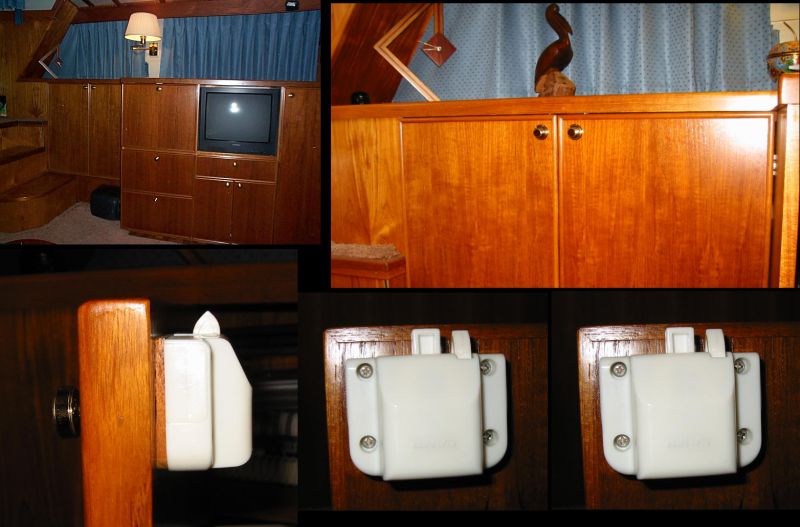Undermount Sinks for Laminate Tops
Tips on installing undermount sinks designed for laminate countertops. September 27, 2008
Question
Im looking for advice on mounting a Karran Hampton undermount-to-laminate sink. The sink is 21" front to back and the inside of the box is 22-1/2". This leaves a little wiggle room for placement of the sink front to back, but in any case will result in a very narrow strip of particleboard countertop remaining behind the sink, and a somewhat wider strip at the front.
My concern is that these narrow strips will overall greatly diminish the strength of the countertop and possibly lead to breakage during handling/transport. I have a couple of ideas on how to minimize the problem but since this is my first Karran experience I'm wondering how others handle this?
Forum Responses
(Cabinetmaking Forum)
From contributor D:
Undermount on laminate? That's new to me. I'd be out of that one so fast you'd see a streak of sawdust!
From the original questioner:
In the end you may be right but I saw these at IWF in Atlanta and they're pretty neat. Installation is kind of backwards in that the sink has to be fastened to the countertop before the top goes on the boxes. Karran also makes a line of undermount stainless sinks. I think the learning curve is steep but short and hopefully some words of wisdom, and maybe encouragement, will show up here.
From contributor M:
What I would tend to try is to strap a couple of boards along the countertop spanning the sink area by quite a bit. This will strengthen the entire top while handling it. After installation, the weight will be on the cabinets and not a problem. These sinks are kind of a nice look for all that you can expect from Formica.
From the original questioner:
That was one idea I'd planned to use. Another is to make the "buildup" from 3/4 hardwood and make it wide enough to extend out over the cutout. This way it will do double duty as a sink support and will be stiff enough to strengthen the area in front/back of the cutout.
From contributor G:
What are you sealing around the inside of the cutout with?
From the original questioner:
Bondo. It's used to fill a 1/8" gap between the edge of the sink and the edge of the cutout. It seals but mostly functions to hold the sink in position in the cutout and allow you to bring the top of the particle board and the sink to the same level with a belt sander.
Travis
From contributor T:
If you route the lip of the sink to 3/4 and beltsand after the glue is dry you can fill up the 1/8 space with silicone and run a 3 inch wide board right up the sink on the sides and full width front and back you can then flip and continue working on the top. This method works best with beveled edge tops where you are installing the edges last because your front build up also holds yours sink in place.
From contributor D:
I have done about a dozen tops this way (the Bondo method). I've only had one bad experience, My installers leaned the new top and sink against the wall in the home owners garage and somehow the wind tipped it over and broke the sink out. Other than that it has been good. It does help having two or three guys when installing these tops (depending on size), as you do have to lift the sink and top over the cabinets to set in place.
From contributor B:
Hardwood strips for buildup is the answer. I don't know anything about the "Bondo Method". We use solid surface adhesive and mount the top directly to the laminate. We've been doing these for about five years, with no problems. We've also been putting them in postformed tops as well.
From the original questioner:
To contributor B: Thanks for the response. I have Karran's video and PDF files but all their examples show the install of a very small vanity sink, leaving much more meat between the sink edge and the front/back edges of the particle board. So it just left me wondering how to deal with the fragility that results when a much bigger sink hole is cut.
Not sure but I think the Bondo is used to keep any gap between the sink edge and the particle board from telegraphing thru the laminate. Since you're successful without it, its probably not a necessary step.
All in all, I think I've got my ducks lined up fairly straight now and can tackle this thing with a bit more confidence.
From contributor B:
We leave about a 1/4" gap all the way around the sink. We fill it with Silicone caulk. We've never had any issues with telegraphing, including a 909-90 finish (black with a gloss finish) we did a couple of months back. The vast majority of the tops we do are "hi-def" finishes.
The comments below were added after this Forum discussion was archived as a Knowledge Base article (add your comment).
Comment from contributor S:
The Karran sinks were sort of the best you could do for a while if you wanted an undermount in a laminate top. At this point a plain white acrylic sink that is very prone to discoloring is at the bottom of the list in terms of what options are available for this application. Counterseal has a stainless sink system, Edge sinks by Lansen (ironically a division of Karran) and certain very skilled fabricators are doing some cool things in this realm. Related information on undermounts in laminate countertops is available in another post on this site. Search for laminate countertop, undermount sink.
